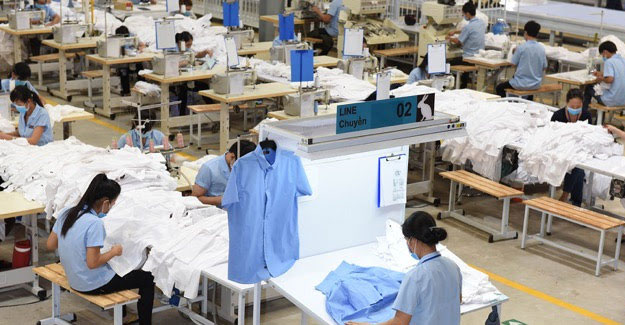
Vietnam Apparel Exporters Face Covid-19 Challenges
Many Vietnamese garment and textile businesses have received notices from their US and EU partners that they will temporarily stop receiving goods for three weeks to one month. According to Pham Xuan Hong, Chairman of the HCM City Association of Garment Textile Embroidery and Knitting, customers said they needed to stop receiving goods due to the rapid spread of COVID-19 in the US and EU, prompting governments to declare states of emergency and tighten border controls. "They asked Vietnamese businesses to suspend orders, including those being transported until borders are reopened," Hong said. He said the US and EU are two important textile export markets of Vietnam. Half of all textile exports from HCM City go to the US, while the EU accounts for 15-18% of annual exports. "Partners in these markets announced the suspension of receiving goods, meaning that nearly two-thirds of the market of textiles and garments narrowed," Hong added. Chairman of Viet Thang Jean Co., Ltd Pham Van Viet, said evidence from China can be used to estimate that it will take at least two months in the US and EU to control the pandemic. When life becomes stable and the retail industry restarts, import businesses will reopen warehouses and import goods for distribution. As for Viet Thang Jean, Viet said the US accounts for 30-35% and the EU for 20% of the company's total export turnover. "Our products are seasonal fashion products. Imported materials were prepared six months ago. At this time when the partners announced that they would stop imports, meaning all the materials prepared for sale this summer must move to next year, making them unfashionable. About 40% of existing fabrics will be abandoned or sold at low prices," he said. In addition, Viet said suddenly stopping imports forced enterprises to store many containers of products which were on the way to US and EU ports. "This makes businesses spend a lot of additional expenses, while its cash flow is 'frozen'." He said the most urgent problem for textile enterprises is not the delivery of orders but how to protect workers. "Textiles is one of the industries using the highest number of workers, most of them are unable to switch to other jobs in the current situation. Therefore, maintaining employment and income for workers is not only a vital business problem but also a great impact on society," he said. "If enterprises let workers go, where will hundreds of thousands of workers go? What will businesses do to recruit workers to recover production when the pandemic is controlled? Such questions are not yet answered," Viet added. Textile enterprises have proposed the government quickly disburse approved economic stimulus packages, and consider partial use of the unemployment insurance fund and social insurance fund to help businesses continue paying their workers. They also hope the Ministry of Finance and the banking system will lower interest rates or give interest-free loans, which could be used to pay workers until production activities and trade return to normal. In 2019, the country's exports to the US reached nearly US$ 15 billion, about 45% of total garment and textile export turnover. In the first two months of this year, garment and textile exports to the US hit US$ 2.25 billion, up 5.3% year-on-year, accounting for nearly 48% of the country's total textile export value.
Textile Excellence
If you wish to Subscribe to Textile Excellence Print Edition, kindly fill in the below form and we shall get back to you with details.








